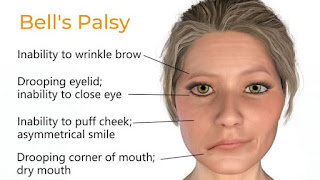Bell's palsy is a condition that affects the facial nerve, causing sudden weakness or paralysis on one side of the face. It can happen to anyone, but it is more common in people between the ages of 15 and 60, and it is also more likely to occur during pregnancy.
Symptoms of Bell's palsy include drooping of the face on one side, difficulty smiling or closing the eye on the affected side, and loss of taste sensation in the front two-thirds of the tongue. Other symptoms can include increased sensitivity to sound in one ear, a feeling of fullness or pressure in the ear, and difficulty eating or drinking.
The exact cause of Bell's palsy is not known, but it is believed to be related to viral infections such as herpes simplex or the flu. The condition is also thought to be related to inflammation of the facial nerve.
Treatment for Bell's palsy typically includes a combination of corticosteroids, which can reduce inflammation and swelling of the nerve, and antiviral medications, which can help to prevent the spread of the virus. Physical therapy can also be helpful in improving muscle tone and strength in the face.
It is important to seek medical attention as soon as possible if you suspect you have Bell's palsy, as early treatment can improve your chances of a full recovery. In most cases, people with Bell's palsy make a full recovery within a few weeks to a few months, but some may have long-term weakness or facial muscle contractures.
In conclusion, Bell's palsy is a condition that affects the facial nerve, causing sudden weakness or paralysis on one side of the face. It is a common condition but the exact cause is not known. Treatment typically includes corticosteroids, antiviral medication and physical therapy and early treatment can improve chances of full recovery.











0 Comments